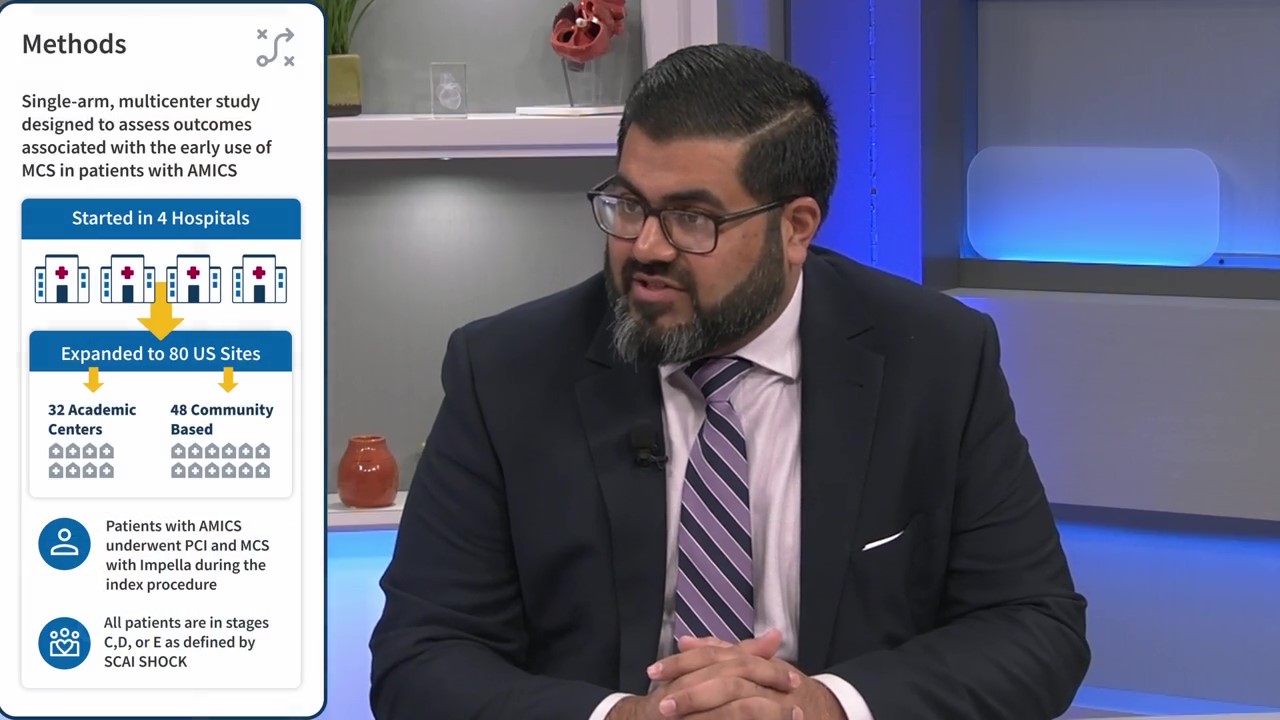Clinical Research & Data, AMI Cardiogenic Shock
Dr. Navin Kapur: Cardiogenic Shock Working Group and SCAI Shock Stages–TCT 2022
In this presentation from TCT 2022, Navin Kapur, MD, provides an update from the Cardiogenic Shock Working Group (CSWG) and discusses SCAI shock stages.
Dr. Kapur explains that the CSWG is an academic research consortium that currently includes more than 5,000 patients in its registry. There are currently about 2,700 cases of heart failure cardiogenic shock (HF-CS) and about 1,500 myocardial infarction cardiogenic shock (MI-CS) cases. “It’s an immense amount of data,” Dr. Kapur states, “that really allows us to change opinions into fact.”
Dr. Kapur presents data from a recent CSWG registry publication showing that in-hospital mortality for patients with HF-CS is 25% and that mortality rises to 42% in patients with MI-CS. Out-of-hospital cardiac arrest (OHCA) has a profound impact on mortality in these patients, increasing in-hospital mortality to 35% in HF-CS and 55% in MI-CS. Within the HF-CS cohort, Dr. Kapur highlights, “There’s a split between de novo heart failure, which starts to look like MI level mortalities, versus acute-on-chronic heart failure.”
SCAI stage B patients are an important focus of the CSWG. “Now traditionally ‘B’ means ‘beginning’ shock,” Kapur states. “And we actually think, based on the data I’ll show you, ‘B’ is actually for ‘bad’ and that means bad prognosis.”
The CSWG tweaked the definition of the SCAI B classification to include patients who are normotensive but hypoperfusing. “Now that’s very important for the heart failure subset,” Dr. Kapur explains, “where many of these patients are normotensive with elevated lactate, low output states, but they’ve acclimated to that type of environment having a low EF for a long time.” He explains that in this registry analysis they’ve created simple metrics that can be applied at the bedside and can also be applied retrospectively to multiple clinical trials (SBP, MAP, lactate, ALT and pH). He adds that the final component for evaluating SCAI stage is treatment intensity (vasoactive and inotropic drugs and MCS).
Dr. Kapur reviews some of the analyses incorporating the tweaked CSWG SCAI stage B definition allowing hypoperfusion. In particular, he looks at escalation or deterioration of patients, noting, “If you enter the hospital as a SCAI B patient, there is a 90% chance that you are likely to deteriorate into a worsening SCAI stage. And that’s why I don’t think it should be called ‘beginning’ anymore, and really this is a population of patients we have to focus on and intervene early, because this is a really bad prognostic indicator.”
Dr. Kapur concludes his presentation by briefly looking at other shock trials (eg, IABP-SHOCK II, IMPRESS Trial Program, DanGer Shock Trial, ECLS-Shock Trial, National Cardiogenic Shock Initiative, STEMI-DTU™, RECOVER IV) through the SCAI staging lens.
Sign Up for Latest Updates
NPS-3186


